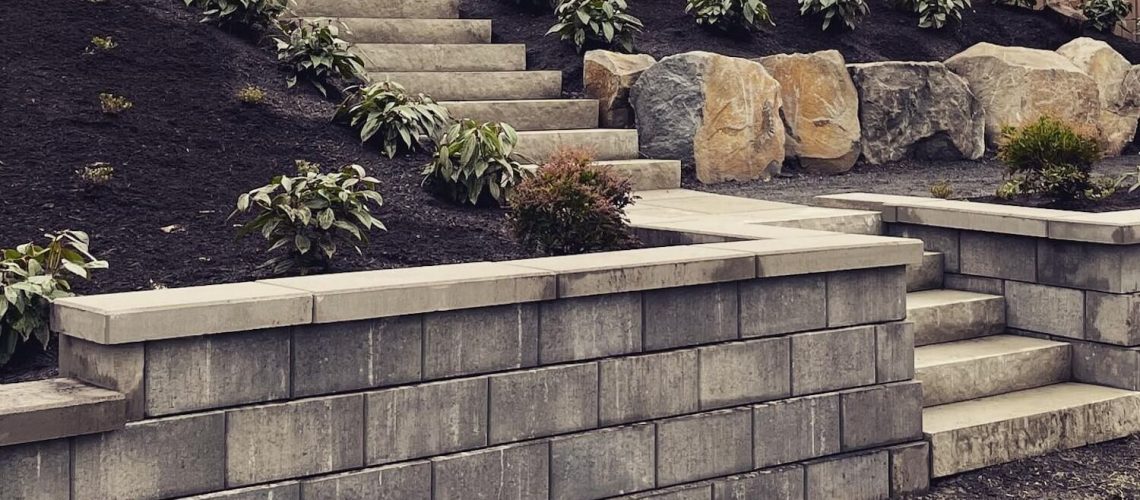The benefits of retaining walls vary from functional to aesthetic. In their most simple and common form, they are used to keep soil from eroding away or moving. They can be built from a wide variety of materials and come in many different shapes and sizes.
It is worth knowing the different types of retaining walls before considering an installation. Whether you are looking to control the flow of water to solve drainage issues or build walls to create more privacy.
Here’s all you need to know about retaining walls.
Gravity retaining walls
These are probably the oldest examples of types of retaining walls and the most cost-effective. Gravity retaining walls prevent soil erosion and movement through the gravitational force of their own weight. They are most suitable when built at a height that exceeds no more than 4 feet (and anything over that would need engineering), any taller and the wall may prove to be too heavy for the ground below. There is great versatility in the materials that can be used when installing these types of retaining walls, from concrete to brick to timber. Though the gravity wall is a simple design it is aesthetically flexible.
Cantilever concrete retaining walls
Cantilever retaining walls are the most common type in construction. They are built using reinforced concrete with an inverted T or L shaped foundation. They require a little more planning and design than a gravity retaining wall but can be built up to a greater height of 5m tall. Common failures in the installation of cantilever retaining walls include:
- Fitting the wall with a slope or curve
- Cracks in the structure of the wall
Cantilever retaining walls take up a little less space once constructed but require temporary support to be put in place if they are being built on a preexisting slope, this is because they require space behind the wall during construction.
When to replace a retaining wall
It is worth knowing when to replace or repair a retaining wall to avoid any future structural failures. Problems with types of retaining walls can be caused by a variety of factors including movements caused by tree roots, poor construction, and poor drainage.
You should consider upgrading your existing retaining wall if it is currently displaying signs of any of the following types of problems:
- Sagging
- Leaning
- Bulging
- Cracking
If your wall is victim to any of these problems it is worth addressing them immediately to avoid the problem from worsening and becoming both more dangerous and more expensive to fix. A good example of a retaining wall turns the uneven ground into something more eye-catching and easier to traverse. As years go by, retaining wall designs are becoming continually more and more to the point where the choice of aesthetic is becoming nearly endless. A properly built wall will not only defend against damage from problems like soil erosion and sliding, but it will also boost the value of your property for decades to come.

